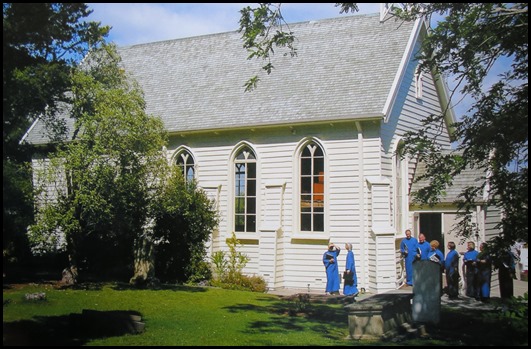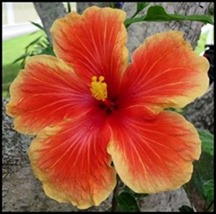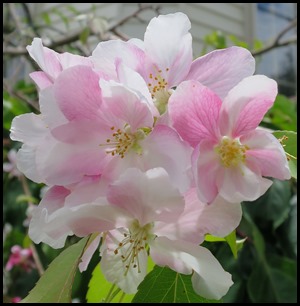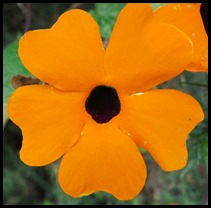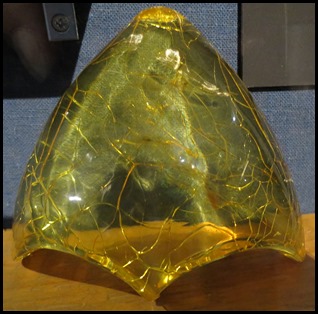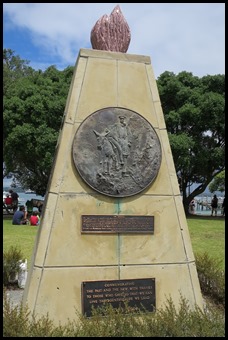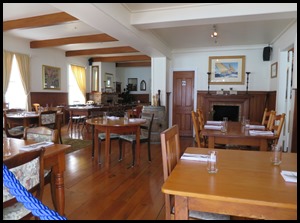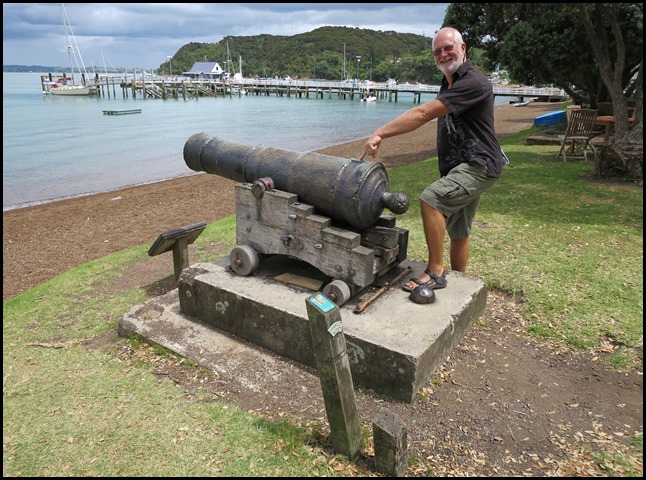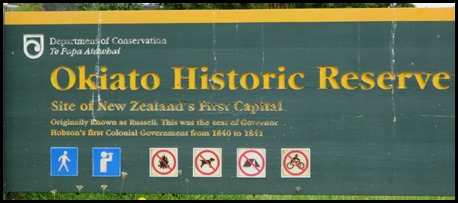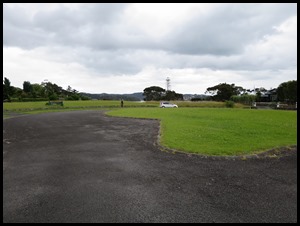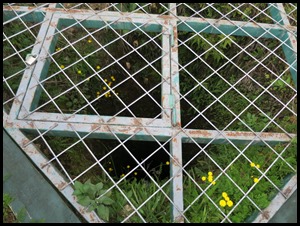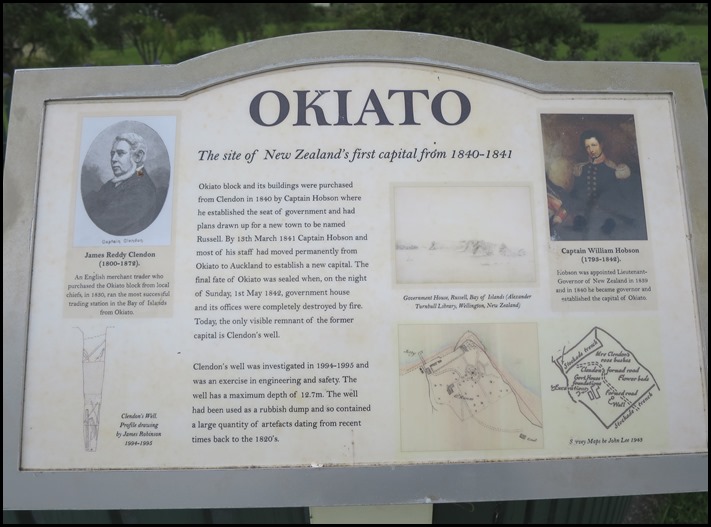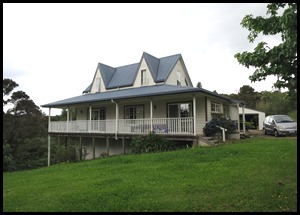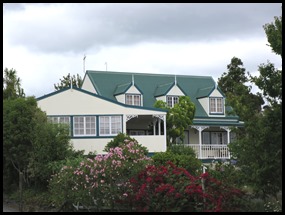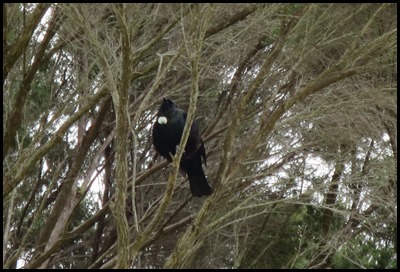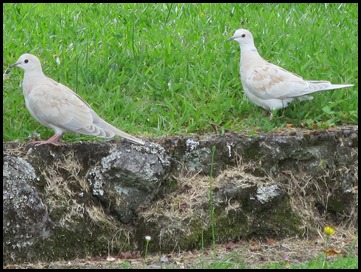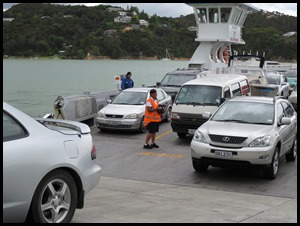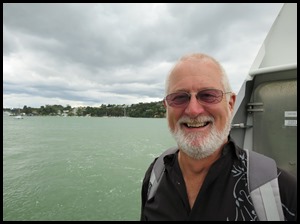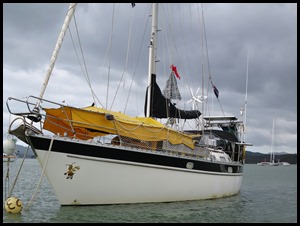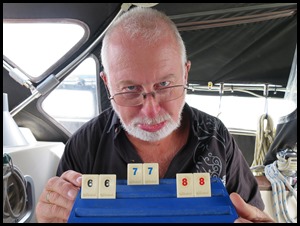Russell

|
Russell 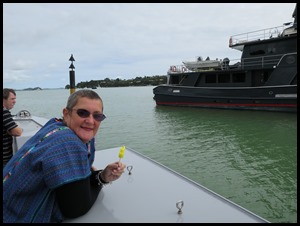  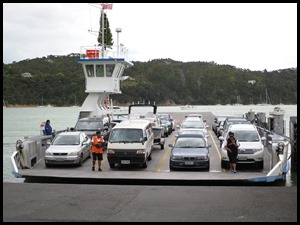 A cold and dull morning,
we bimbled up the road and caught the ferry to
Russell. The plan was to visit the little museum which has a fifth scale replica
of HMS Endeavour (the first name of Inspector Morse). Not knowing where to find
the said museum we asked the ticket lady – seen in the orange work vest. Erina told us it was an eight kilometre walk and did we
have a car. Finding we didn’t, she promptly handed over her keys, pointed to the
fifth car in line on the other side, apologised that it smelt of smoked fish and
bade us be back by two as that was her shift end. Wow, such kindness is very
humbling and the third time this event has happened to us (the first two in West
Palm Beach and Titusville). We found the little car and off we
went.
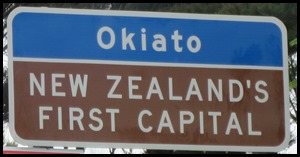 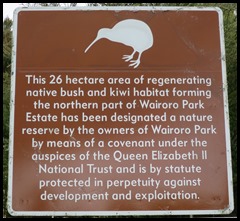 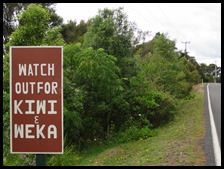 Soon after leaving the
ferry we passed a sign telling us to turn left to see
Okiato, will do on the way back if we have time. A first for us was to
read about Kiwi’s, getting nearer to the target of
seeing one in the flesh, note to self - find out what a weka is.......but they clearly cross the road whatever they
are.
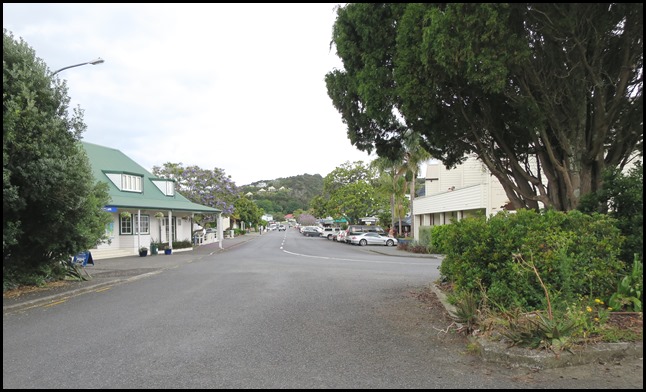 Legend says that a chief,
wounded in battle, asked for penguin and after drinking some of the broth,
murmured “Ka reka te korora” – how sweet is the penguin, so the town got its
original name – Kororāreka. The town was named Russell in 1844.
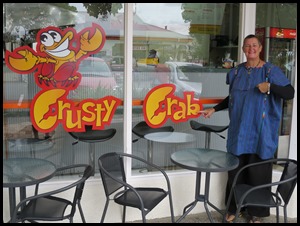 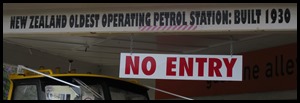 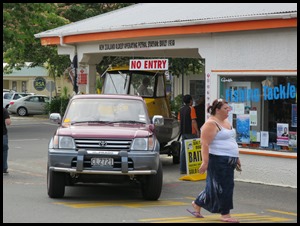 We drove to the end of the
cute little town, did a u-turn and stopped briefly at the quayside. I was
thrilled to see a cafe called the Crusty Crab.
No comment. We watched a car pulling into
the petrol station, the boat on the trailer only just
clearing height wise. The sign says New Zealand oldest
operating petrol station: built 1930.
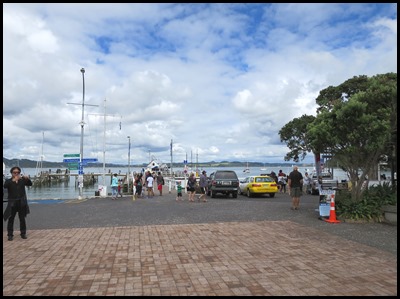  Very beautiful quay. So reminded us of Cornwall,
the same happy touristy feel.
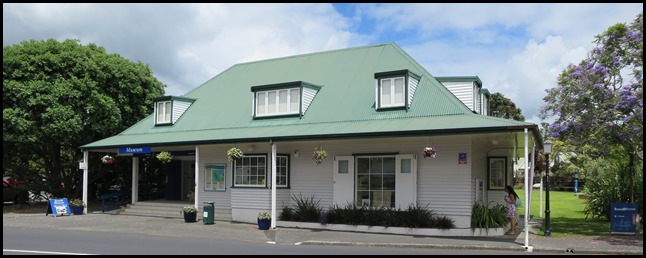 The
Museum.
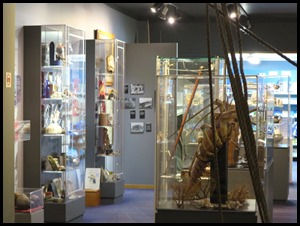 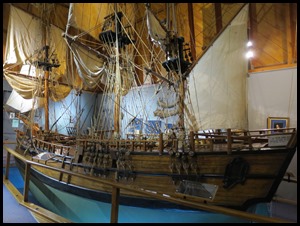 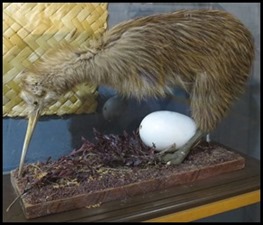 The small museum was full of local history and we began by watching
an informative video of the history of Russell. HMS
Endeavour was all we wanted her to be (own blog) and we got even closer
to seeing a kiwi. This chap has unusually furry, fine
feathers and holds the dubious record of having the biggest egg compared to body
size. Bigger than I thought, can’t wait to
see one strutting his stuff.
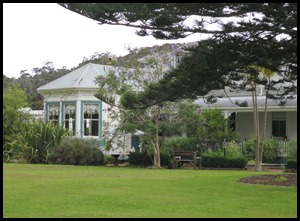 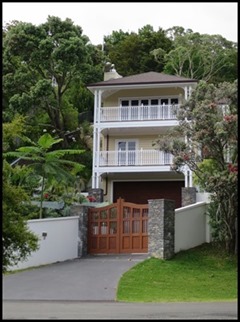 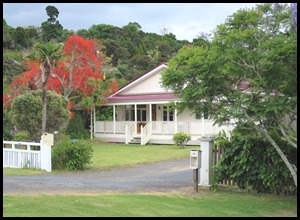 Present
day: Russell was the first permanent European settlement
and sea port in New
Zealand,
formerly known as Kororāreka, is now mostly a "bastion of cafés,
gift shops and B&B’s".
Pompallier Mission, the historic printery/tannery/storehouse of the early
Roman
Catholic
missionaries, can also boast to be the oldest surviving industrial building in
New Zealand, while the town also holds Christ Church, the country's oldest
surviving Anglican
church (own blog). The surrounding area also boasts many expensive holiday
homes, as well as New Zealand's most expensive rental accommodation, the
Eagles
Nest.
The internationally acclaimed photographer Laurence
Aberhart
lives here.
The car ferry across the Bay of Islands runs between Okiato and Opua, and is the main tourist access to Russell. There is a land connection, but this requires a substantial detour. Russell School opened in 1892. As of the 2006 Census the town had a resident population of 816, an increase of 12 from 2001. Much of the accommodation in the area consists of holiday homes or tourist accommodation.
A now common sight for us is to see the jacaranda tree in full bloom. The one next to the museum was particularly beautiful.
History: Captain Cook sailed HMS Endeavour into the Bay of Islands in 1769, the town was already an established settlement for the Ngare Raumati people. Cook was followed by other explorers, notably du Fresne, then by whalers looking for a reprovisioning port and traders in search of kauri spars and flax. When European and American ships began visiting the area, the large, indigenous Māori population quickly recognised there were great advantages in trading with these strangers, whom they called tauiwi. The Bay of Islands offered a safe anchorage and to attract ships, the Māori began to supply food and timber. What these people wanted was respect, plus firearms, alcohol and other goods of European manufacture. Settlers and traders developed Kororāreka, but, as a result of this trade the town soon earned a terrible reputation as a community without laws. It became full of deserting seamen, runaway convicts, grog swillers, gamblers and prostitutes, gaining the name the "Hell Hole of the Pacific". European law had no influence and Māori law was seldom enforced within the town's area. The more respectable element formed the Kororāreka Association, a vigilante committee which meted out rough justice until British Government was established in 1840.
On the 30th of January 1840 at the Christ Church, Governor William Hobson read his Proclamations (which were the beginnings of the Treaty of Waitangi) in the presence of a number of settlers and the Maori chief, Moka Te Kainga-mataa. A document confirming what had happened was signed at this time by around forty witnesses; including Moka, the only Maori signatory. The following week, the Treaty proceedings would then move across to the Western side of the bay to Waitangi. By this time, Kororāreka was an important mercantile centre and served as a vital resupply port for whaling and sealing operations. When the Colony of New Zealand was founded in that year, Hobson was reluctant to choose Kororāreka as his capital, due to its bad reputation. Instead he purchased land at Okiato, situated five kilometres to the south, and renamed it Russell in honour of the Secretary of State for the Colonies, Lord John Russell. Captain Hobson soon decided that the move to the Okiato site was a mistake, and Auckland was selected as the new capital not long after.
The establishment of government with consequent levies and taxes, together with the capital being chosen in Okiato, the town of Russell saw economic decline and a growing Māori resentment, which focussed itself on the flagstaff. Between July 1844 and March 1845, it was felled four times by Māori warriors (we saw chunks of it in the museum), led by Hone Heke Pokai. On the last occasion, the town was abandoned by its residents, who fled aboard British ships, which then shelled and destroyed most of the houses. Once the war in the North was over in 1846, Russell was gradually rebuilt. Hōne Heke directed his warriors not to interfere with Christ Church and the Pompallier Mission. In 1841–42, Jean Baptiste Pompallier had established a Roman Catholic mission in Russell, which contained a printing press for the production of Māori-language religious texts. His building, known as Pompallier Mission, remains in the care of the New Zealand Historic Places Trust. The new town of Russell had a magistrates court, a customs office and a garrison at nearby Te Wahapu until 1857. American whalers still came into the bay, so there was a consular agent to look after their affairs.
From 1874 to the 1880’s manganese, used in glassmaking, was found on Mount Tikitikioure, three miles southeast of Russell and miners moved into Orongo Bay. Many of the miners were Cornish, ore was carried by a continuous wire conveyor to punts then ships in the bay. In the 1880’s, a fish factory was built at the end of Russell Beach and a new wharf erected. By 1900 Russell was once again a quiet place, gradually turning into a popular summer holiday destination and a nice place to retire to. The enthusiasm of the American writer and sportsman Zane Grey, helped establish the Bay of Islands as a centre for deep sea game-fishing, with a clubhouse at Russell. The construction of the road between Whangarei and Russell in 1930 meant that cars could drive here and the town was no longer an “island” reached only by sea. Today the people of the town are involved in tourism, fishing, oyster farming and cottage industries.
The Town Hall, the War Memorial and a very nice restaurant.
No comment needed
This old lady first arrived in Kororāreka as ballast in the ship Sourabaya which was found to be unseaworthy and was broken up here in 1840. The cannon was installed with two others on the lower slopes of Maiki Hill in 1845 to defend the township against the Ngapuhi chief Hone Heke. This defence was unsuccessful and the cannon lay on the slopes until 1889 when it was sent to an exhibition in Dunedin. On its return it was placed here in 1917. The Russell Museum renewed the replica gun carriage in 1992-3 as part of its policy to support and enhance the heritage of the town.
Time to leave Russell behind, but time enough to pop in to Okiato.
Okiato is now a small green at the end of a cul-de-sac with a decorated fence around a well.
We read the information board.
Admired a couple of the many parsey houses.
Our first tui, was a surprise, didn’t know he was such a big chap, and thought from the pictures we had seen he was small. Very smart with this white throat tuft, he whooped, clucked, chucked and wheezed before flying off. These birds were caught and tamed by the Māori who taught them to speak, they are great mimics and we look forward to seeing more of them. Our chap left us with a pair of posh doves.
Keys back to Erina, (who refused any petrol money), Thank You, we are so very touched by your kindness. We passed the other ferry, cheesy grin from the skipper.
Bear couldn’t walk by the chandlers without a quick look. Home to Beez, resplendent with her Christmas Tree, just before the heavens opened. It continued to rain as if it didn’t want to stop. Not so cheesy now big boy.......I feel the need to take much dollars from you on this one sweet cheeks. Grrrrrrr.
.
ALL IN ALL A LOVELY PLACE TO VISIT A VERY, VERY PRETTY LITTLE TOWN |


